What Is Aging In Place?
Studies routinely show that the vast majority of people would prefer to grow old in their homes as opposed to retirement and care communities; however, as the years go by, it often becomes difficult to “age in place” safely.
In this guide to aging in place, I’ll pull from my years of experience as a caregiver to help you understand the obstacles presented by aging in one’s home. With the proper planning, you can grow old in your home with minimal risk.
What Is Aging In Place?
Simply put, aging in place is a way to describe the process of staying in your own home as you get older. To figure out if this is a viable strategy for you or a loved one, you’ll want to start with some planning.
Typically, aging in place is ideal for those who are physically able to get around without much hassle. This will make it easy to accomplish routine tasks such as cooking, cleaning, and bathing, all without risk of injury or strain. Additionally, if you have a nearby loved one or caregiver, these people can assist with tasks such as shopping or medication management, in addition to providing company.
Older adults who are disabled or have debilitating conditions should consider moving to a senior living community. Sometimes adult children and other family members may be able to take on caregiving responsibilities; however, there is no substitute for trained medical staff. If you’re someone who needs help cleaning, cooking, bathing, and moving, then a senior community would likely be a more fitting solution.
Planning To Retire at Home
This is why it’s important to start planning your finances and living conditions at least 10 years before your retirement. When planning to age in place, you’ll want to prioritize safety and general wellbeing. Check with your family doctor to understand how any health problems that you currently have can affect your, ability to get around in the future. You may then future-proof your home and arrange for support (from an agency or your loved ones) accordingly. Recalibrating your home and signing up for added services will not come cheaply or easily.
To figure out if aging in place is right for you, you’ll want to consider the following factors:
- Your Health: First off, you’ll want to take stock of your health and mobility. Do you have any existing or developing conditions, be they mental or physical? How might these affect your future needs?
- Your Home: Is your home accessible and safe? Is there one story, or will stairs be a daily hassle? Will your environment be easy to maintain and keep clean? Do you live with a spouse or roommate?
- Your Support Network: After thinking about your health, mobility, and home, you’ll likely get an idea of the kind of help you’ll need. If you have nearby loved ones, perhaps they can come over for assistance with cooking, cleaning, and general company. More rigorous services might require professional caregivers. Be sure to weigh the costs of any caregiving in relation to the costs of senior living communities.
Preparing Your Home
Preparing your home for aging in place might seem like a tall task. Luckily, there’s a wide range of simple home enhancements that can make your life both easier and safer. Here are some solutions to consider.
Medical Alert Systems
When an older adult falls and slips, it can be very scary. Every year, three million people end up in emergency care for fall-related injuries. This is why you need to install medical alert systems (with fall detection) in your home. These devices, which cost as low as $19.95 per month, are a great way for older adults to obtain emergency assistance in the event of a medical issue. For more on this, check out our list of the best medical alert systems.
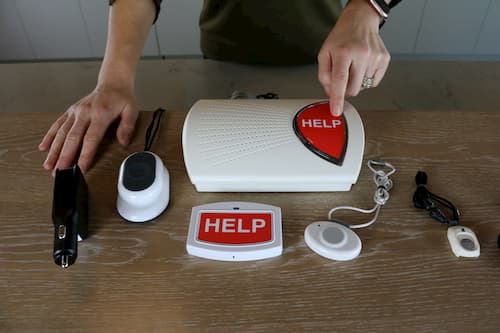
Note: With medical alert systems, be sure to subscribe to 24/7 monitoring services. This way, even if you are living alone and away from loved ones, there is a trained team ready to rush to your assistance in the event of a medical emergency.
Walk-In Bathtubs
With their plentitude of slippery surfaces, bathrooms are a high-risk area for falls. Therefore, walk-in bathtubs are ideal for those with mobility issues. Not only are they easier to get into than standard tubs, but they also provide some luxury features such as water jets and heated surfaces. While certainly not cheap, these devices mitigate the risk involved in the daily routine of bathing. Many companies like American Standard offer free in-home consultations to help you figure out which tub will suit your needs.
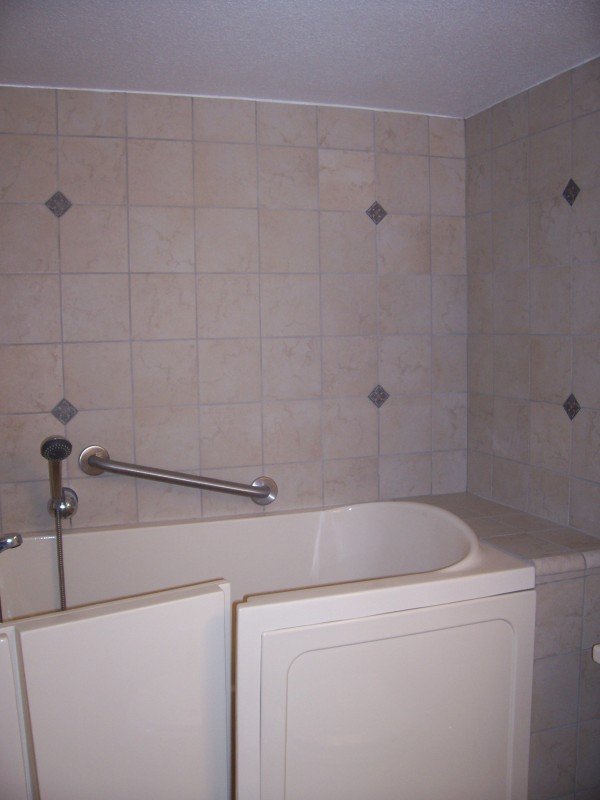
Hearing Aids
Medical-grade hearing devices not only keep people alert, but they also help them live their lives to the fullest, allowing them to keep easy communication with their loved ones and the world around them. Typically, the cost of hearing devices ranges from $2,000 to $2,500 per unit. There are also some great affordable hearing aids on the market.
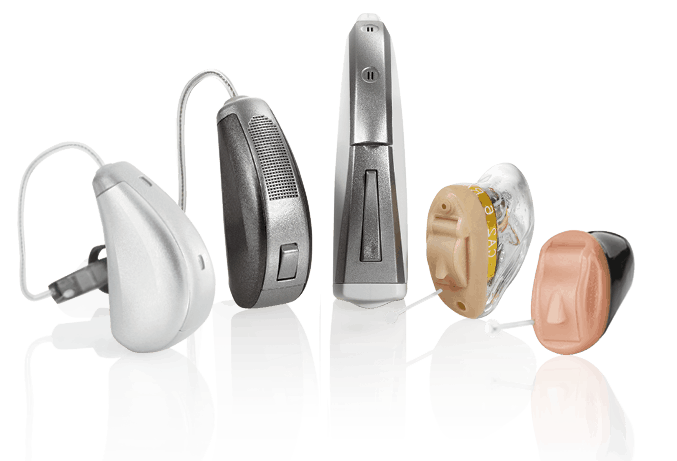
Medication Dispensers
Each year, it’s estimated that 1.5 million people are harmed by medication mismanagement. Considering this statistic, older adults would benefit from the use of an automatic medication dispenser. These devices, preloaded with set doses of medication, dispense the proper amounts of prescriptions, mitigating the risk of improper dosing.
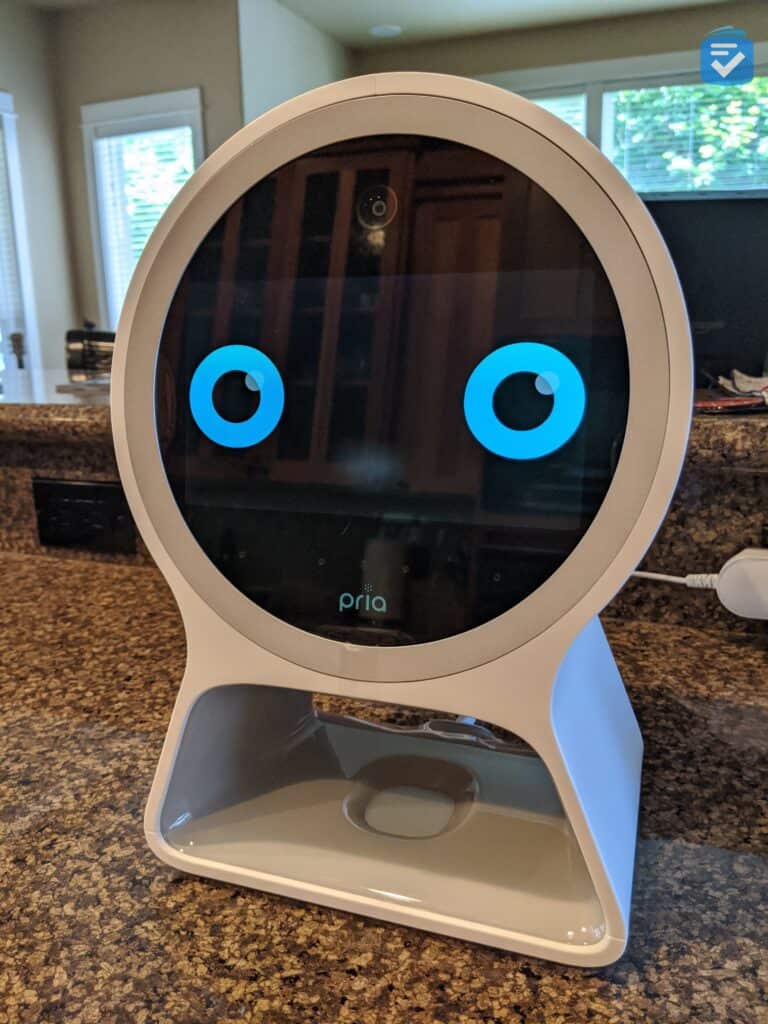
Anti-Slip Surfaces
If you are sure of your decision to age in place, choose flooring materials like carpets, linoleum, or cork that are slip-resistant and easy to maintain. Those who do not want to invest so much in refitting their home should at least consider incorporating anti-slip mats, non-slip adhesive tapes, or anti-slip coating on high-risk surfaces such as bathroom floors.
Ramps
Older adults who depend on scooters or wheelchairs should still be able to enter and leave their residence independently. To enhance their mobility around steps, showers, and raised landings, ramps can really help.
Home Security Systems
Living alone at home is great for privacy and independence, but it raises concerns about safety. To keep your home safe from intruders, fires, and water damage, you should consider installing a home security system. These systems come with sensors, cameras, sirens, smart locks, and professional monitoring. All of these can alert authorities in the event of a break-in or other emergency.
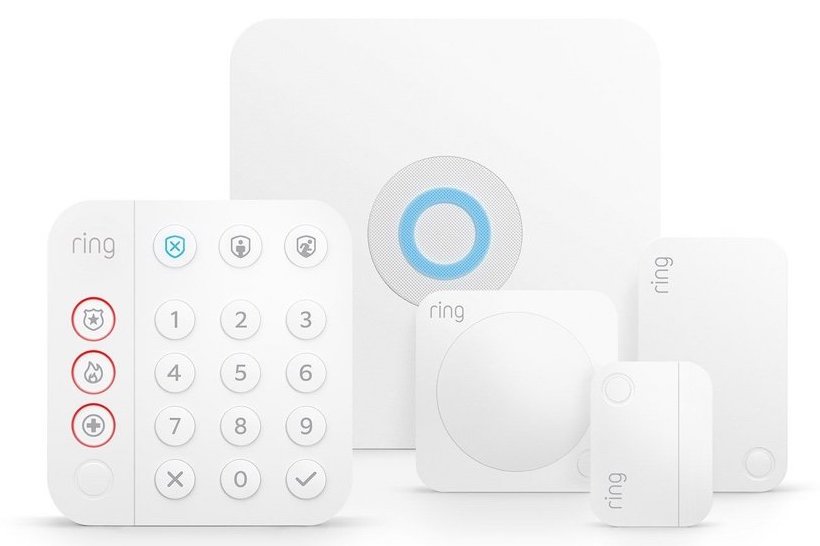
Smart Home Technology
Imagine switching off electronic devices, TV, lights, home security systems, with a voice command. That’s exactly what smart home technology does. You may use it to even place grocery delivery or cab bookings. By making it convenient to control multiple smart devices at home, smart home technology ends up being especially helpful to older adults with mobility issues or poor vision.
With Care.com, you can find trusted, local caregivers.

In-Home Care
While technology has immense potential to improve the quality of life for older adults who choose to age in place, it can’t replace human connections. This is why it’s important to find a way to get someone to visit your home. Whether this person is a loved one or a professional caregiver, an actual human can fulfill your unique in-home care needs.
Family Caregivers
Many a time, adult children or other family members live nearby and are willing to help. These people can provide essential assistance with household tasks, health management, transportation, and even social interaction. Studies have shown that regular social interaction with friends and family can greatly reduce the risk of cognitive decline.
Professional Caregivers
Depending on their level of independence, caring for a loved one can be a full-time job. If you need a lot of support with daily activities, it may be best to enlist external support such as professional caregivers. Often flexible in their services, professional caregivers can visit every day, weekly, or simply as needed.
Elder Companions
If you are sufficiently able to take care of yourself but are missing conversations and intellectual stimulation, then consider employing the services of an elder companion. The emotional support and friendship they can provide can go a long way towards making your life full of rich social interaction.
Home Health Care
Sometimes, as you grow older, you may need the likes of nursing care, physiotherapy, nutritional support, and speech therapy. Depending on your individual health situation, and in consultation with your doctor, you can avail such home health care services at different budgets.
Issues With Aging In Place
Presently, 26% of Americans who are 65 and older live alone. Aging in place is a popular option amongst older adults, but it needs to be well-planned. If not, you could end up feeling isolated in a home that you cannot easily navigate, even after investing in expensive care services. Here are some common issues to be aware of when aging in place.
Transportation
The older you get, the more likely it is that you would need support getting to your appointments. So if you are aging in place, you could look up volunteer escort services in your area. You can get volunteers to accompany you to your appointment and back. Alternatively, if you cannot drive, you could just book a local cab via popular apps.
Companionship
Staying at home all day can be boring. Humans inherently hunger for contact with others, hence remain connected with people you know through regular meet-ups or calls. You could also check with your local senior centers if they have any group activities. This is a great way for you to meet new people and build new bonds.
Health Concerns
When you live independently, it’s difficult to find someone to help you when you are unwell. This is why a medical alert system with fall detection can really prove helpful. Also, keep your local healthcare provider’s number on speed-dial for any emergency consults.
Adult Daycare
Sometimes family members are out at work all day, but older adults still need help with daily activities. In such situations, consider signing up for an adult daycare facility. These facilities will pick you up from your home and bring you back at the end of the day.
Costs of Aging In Place
With the life expectancy of the average American increasing, there is a need to plan for the long-term costs of aging in place. Assisted living can cost around $51,600 per year, and a private room in a nursing home costs nearly double this amount. In comparison, those who wish to live in their own homes but avail 40-hours a week of home health aide or homemaker services will need to account for similarly high costs.
It’s marginally cheaper to age in place, but additional costs for home renovations, security systems, medical alert systems, and more advanced medical care can also add up. With that said, it’s possible to get by within the comfort of your home at around the same cost as living at an assisted living facility. Additionally, if you have nearby loved ones, they’ll certainly be able to offset many of the costs of remaining in your home.
Savings Tip: Costs of medical alert devices and home modifications will have to be private pay, but adult day health care and in-home medical services may be covered by your insurance.
Recap
Regardless of our age, we all know that there’s no place like home. This is why older adults dream of aging in place. To make this dream a reality, all you need to do is plan ahead. Even before retirement, you’ll likely be able to anticipate your needs, in terms of both health and mobility. Once you have assessed your future needs and planned out a budget, you’ll be ready to make more memories in the home that you love.
Frequently Asked Questions
-
What is the need for a geriatric care manager?
From being a listening ear to evaluating your in-home care needs and suggesting relevant services, a geriatric care manager can come in handy.
-
If my children stay close by, can I depend on them to help while aging in place?
Be sure to check with your adult children on whether (and how much) they are willing to help with your daily needs. If their commitments allow for them to be very hands-on with your care, then think no more. On the other hand, if they are facing any limitations, be sure to enlist the support of professional caregivers.
-
Will I be able to afford to age in place?
Undoubtedly, aging in place can be an expensive affair. This is why you need to start working on a solid long term care plan around the age of 45-50. Be sure to figure out which services and technologies you will need to comfortably age at home, and plan your finances accordingly. Also, check if you are eligible for any insurance schemes or benefits programs that will pay for some of these expenses.
-
Can I plan to age in place even if my spouse or I need round-the-clock care?
Ideally, it is recommended that older adults who need heightened care choose a nursing home or assisted living facility that will completely take responsibility for their wellbeing. While it’s still possible to remain at home, replicating services can become quite expensive.
